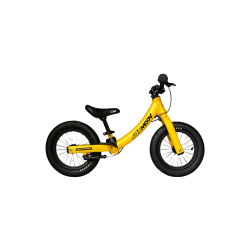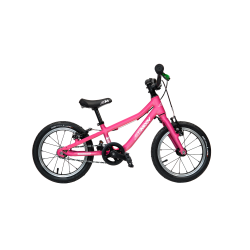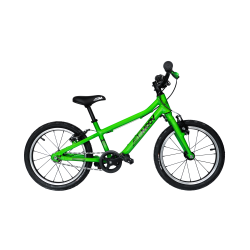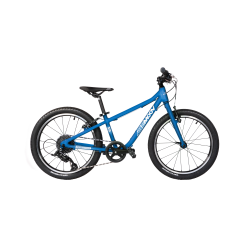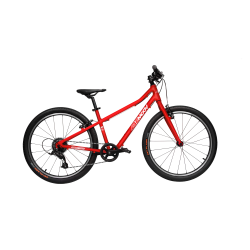Easier to use brakes to learn to stop
To be able to use your bike without being afraid of injury, you need to know how always to stop safely.
Despite the presence of two brakes; one on the front wheel and one on the rear wheel; we have noticed that a lot of young riders tend to apply too fast and too hard on their front brake. This can lead to sliding or locking the wheels up, and result in a crash.
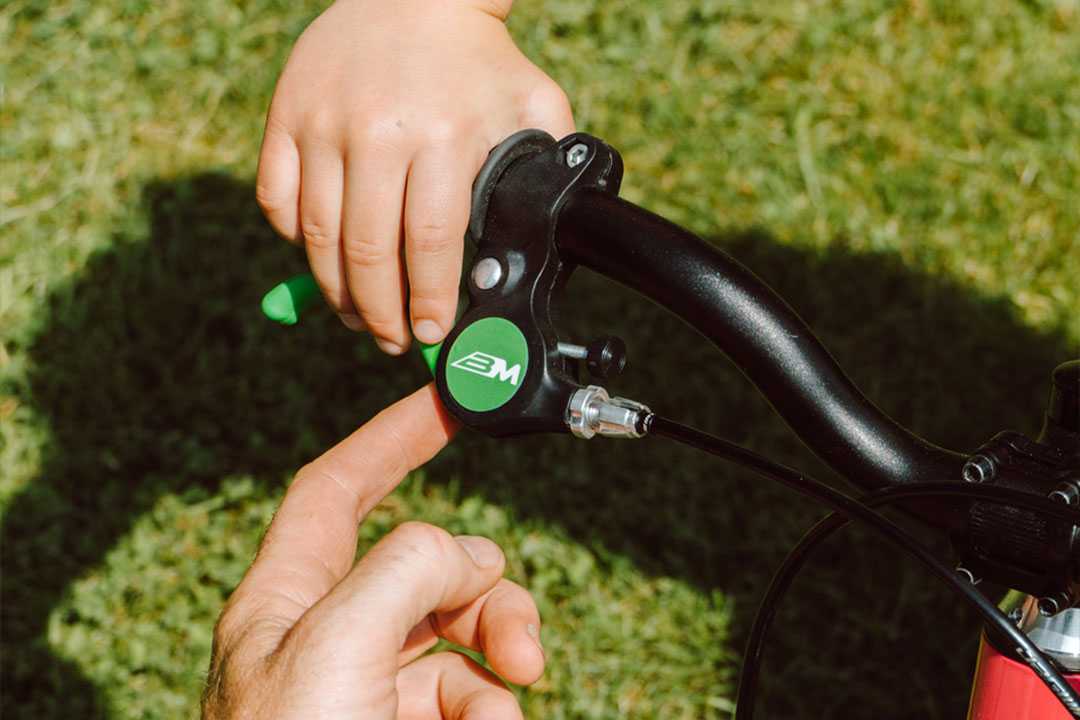
Adapted and adaptable brake levers
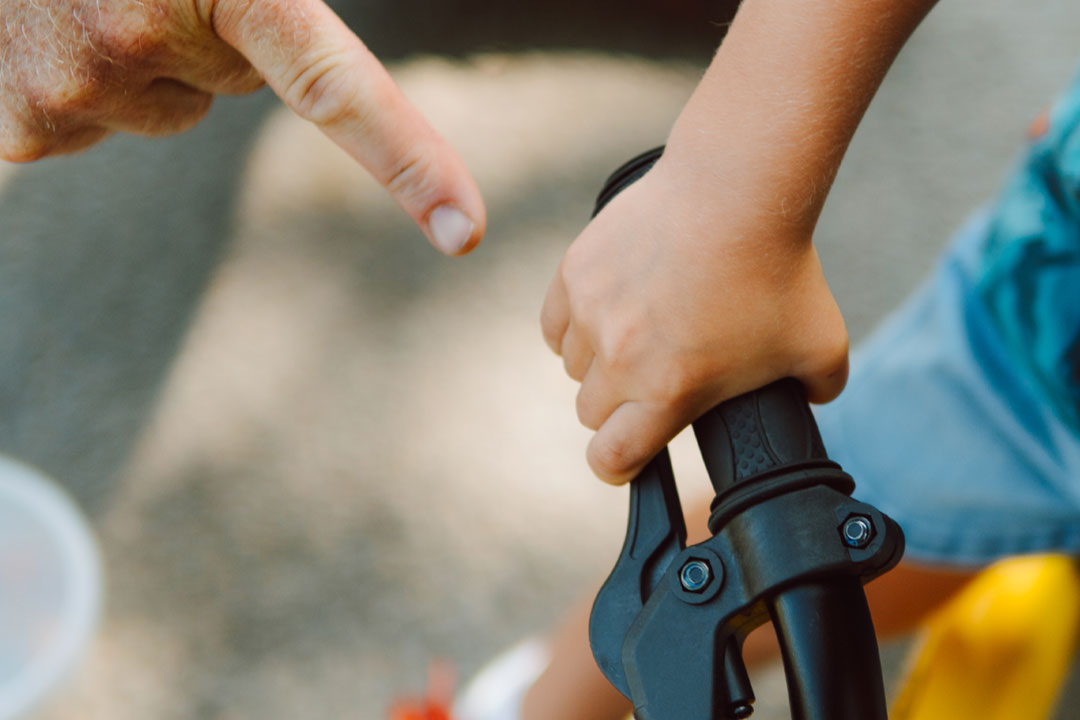
The first challenge for us was to be able to offer levers that were easy to use by all children.
Often, children's bikes have levers that are too long and too far away from the handlebars. When children want to operate them, they must then let go of the handlebar grip to reach the brake lever, at the risk of falling.
To remedy this, we therefore sought the best possible lever sizes for each age group, having many children test several prototypes.
These tests also allowed us to rethink their ergonomics, to offer levers with a more pronounced curve, which children can grip with two or three fingers without needing to let go of the handlebars.
Finally, there remained the question of the depth, or the distance between the brake lever and the handlebar grip. To solve that issue, we have integrated on each BEMOOV bike an adjustment system that will allow you to adapt the stroke of the lever to the size of your child's hands.
Our early models of pedal-powered learning bikes even feature a tool-less adjustment system that lets you adjust this gap easily, even during your child's first long rides.
A lighter V-Brake system
Children are lighter than adults, which means they are also lighter on the bikes, and braking can be done with much less force!
Some kids' bikes come with mechanical disc brakes which may seem like high end equipment but are in fact heavy, only moderately capable, and often difficult to maintain proper tuning.
At BEMOOV, we made the choice of V-brakes. They will be just as powerful or even more powerful than mechanical disc brakes, more reliable and they will be much easier to fine tune.
Best of all: V-brakes are another way to lighten the overall weight of the bike.
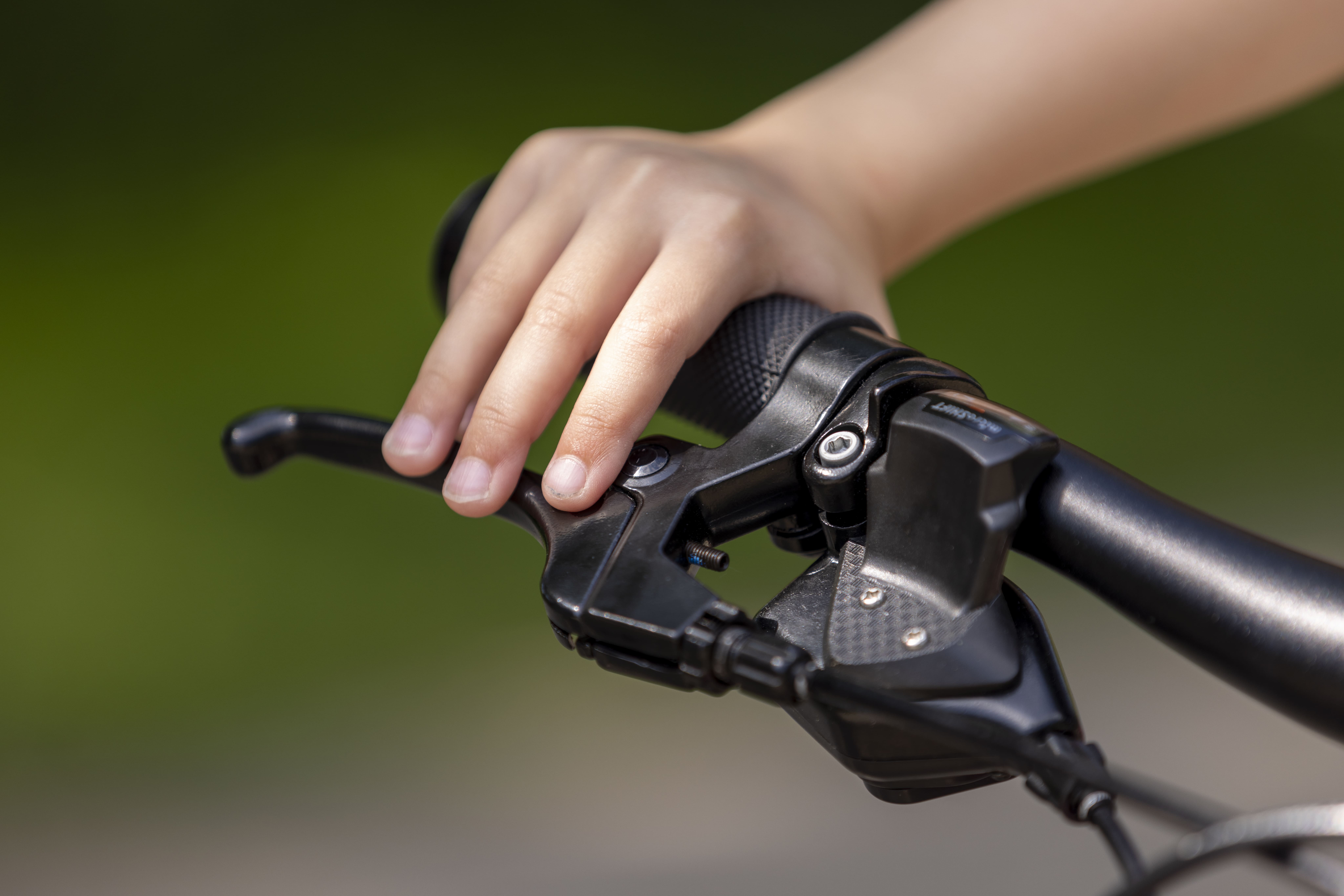
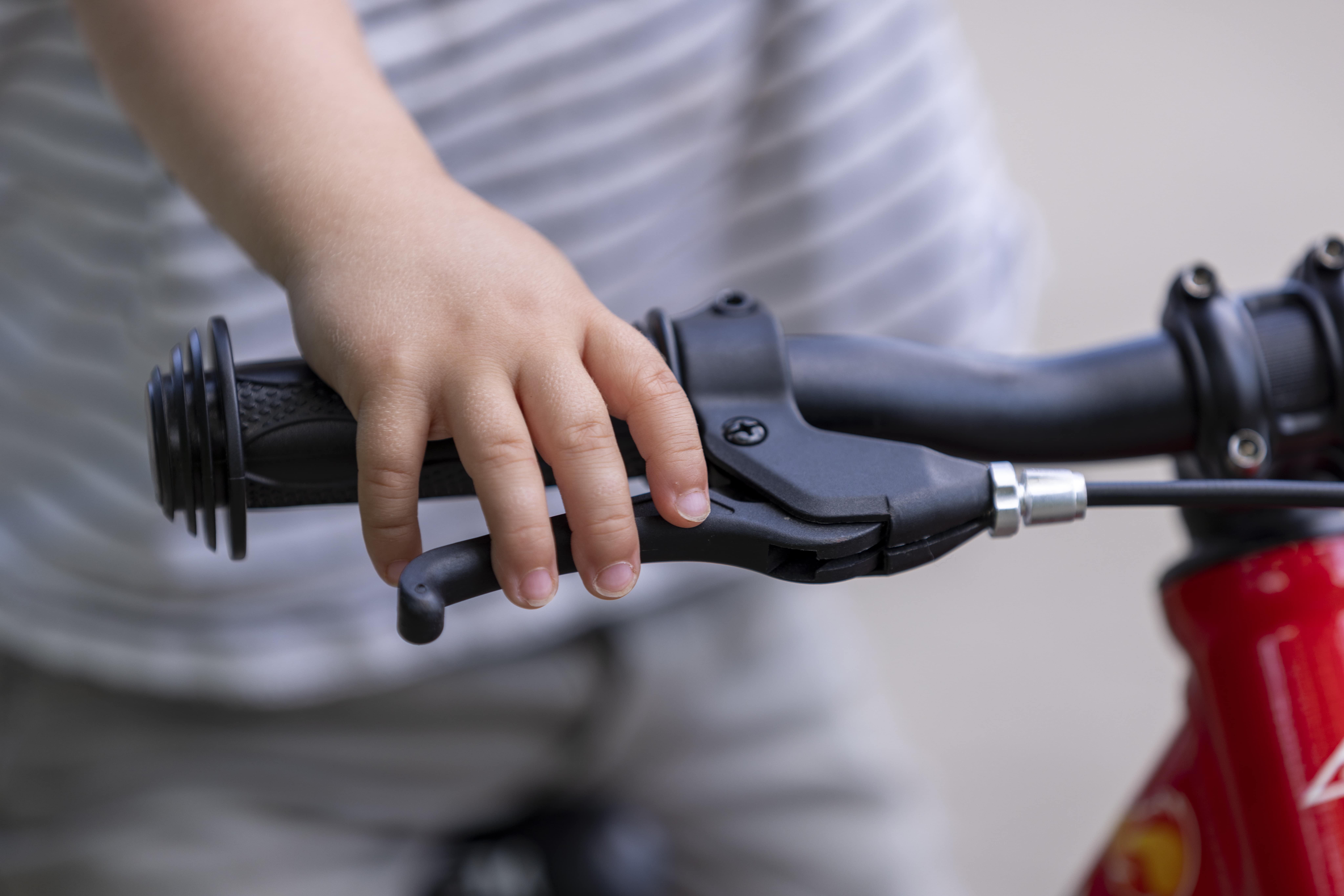
Braking on balance bikes
At BEMOOV, we know that it is important to learn to use the brakes on your bicycle correctly from an early age.
However, children need to be able to appreciate the different terrains and riding conditions in order to be able to use both brakes to the best of their ability.
This is important because braking with too much force with the front brake can lock the front wheel and cause a fall.
However, this is still a bit difficult for the youngest of them to understand. This is why we decided to install only a rear brake on our balance bikes, to allow children to learn the basics of braking with a lever on the right of the handlebars, just like bikes for older children and adults.
Thanks to this, the foundation will already be well established so that later on you can add the brake on the leftside of the handlebars.
Braking on bikes with pedals
Once children are ready to use a bicycle with pedals, it is essential to help them improve their braking skills. However, remembering which brake lever operates which brake can be difficult for a young beginner when they’re in the heat of the moment.
That’s why, at BEMOOV, we have introduced brake handles that are identified by different colors.
The rear brake is represented by the color green. The braking force of the rear is less important but it can be used in all circumstances. The color red is associated with the front brake, which is more powerful because the mass of the bicycle and the rider shifts forward when braking.
But the front’s braking power should always be modulated depending on the circumstances.
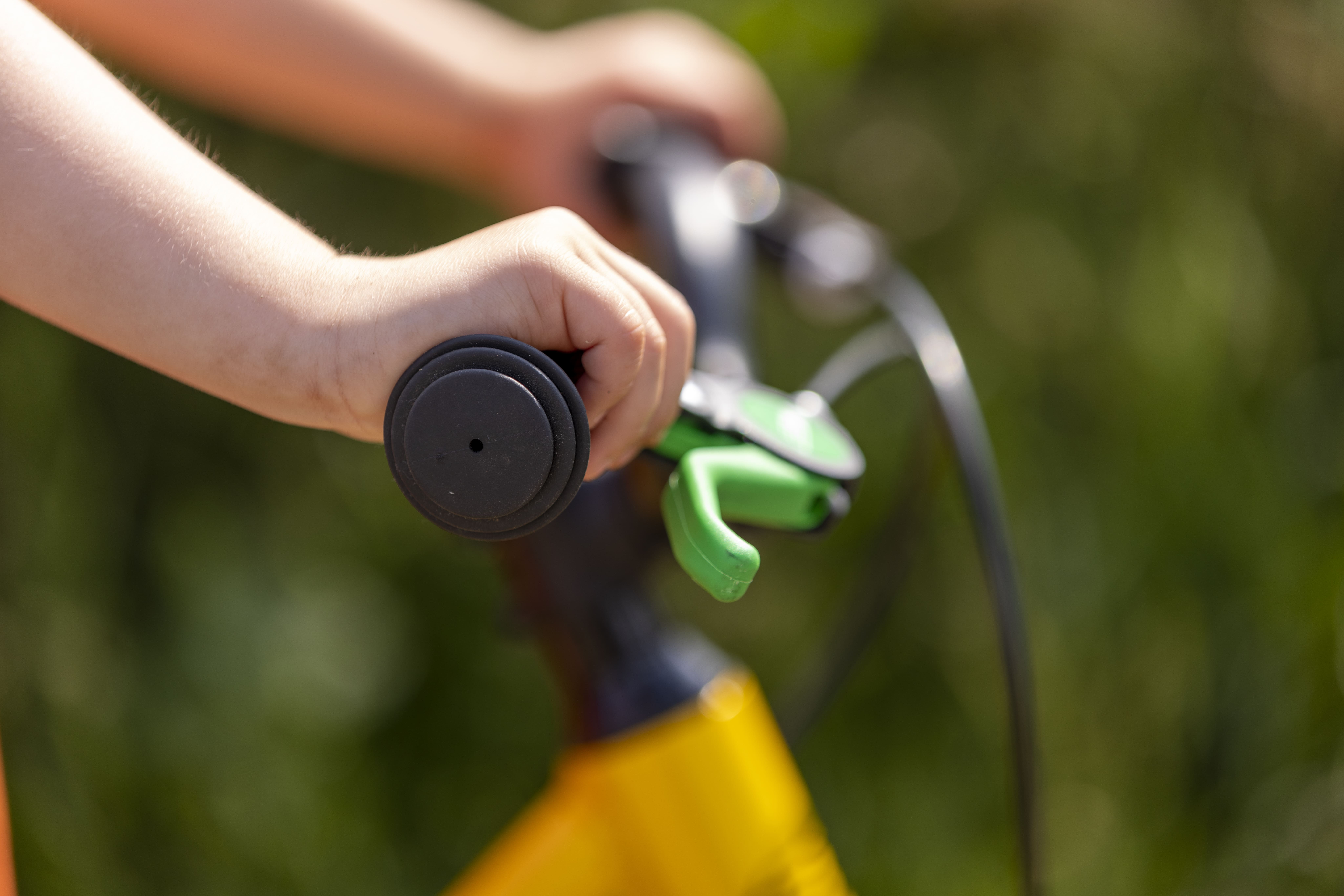
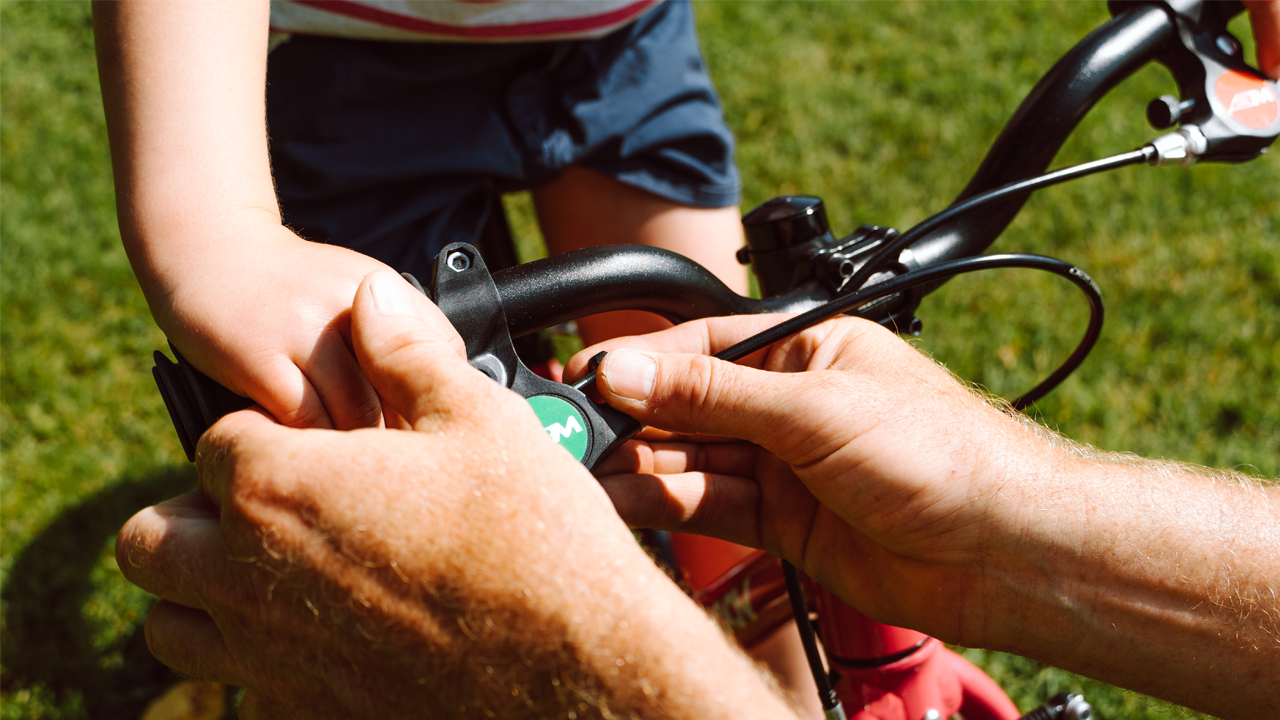
This system allows children to associate a color with a braking sensation, and consequently with one of the two brakes. Conversely, with a classic bicycle children must remember the action of each of the two identical handles, our colored coded handles avoid confusion for our young riders.
They can thus concentrate on adjusting the front-to-rear distribution of their braking power according to the terrain and weather conditions they encounter, and thus better adapt their speed and trajectories.
This is also an advantage for the adult who accompanies the training, because it makes it easier to guide and advise the child thanks to the 2 clearly differentiated brake colors.

